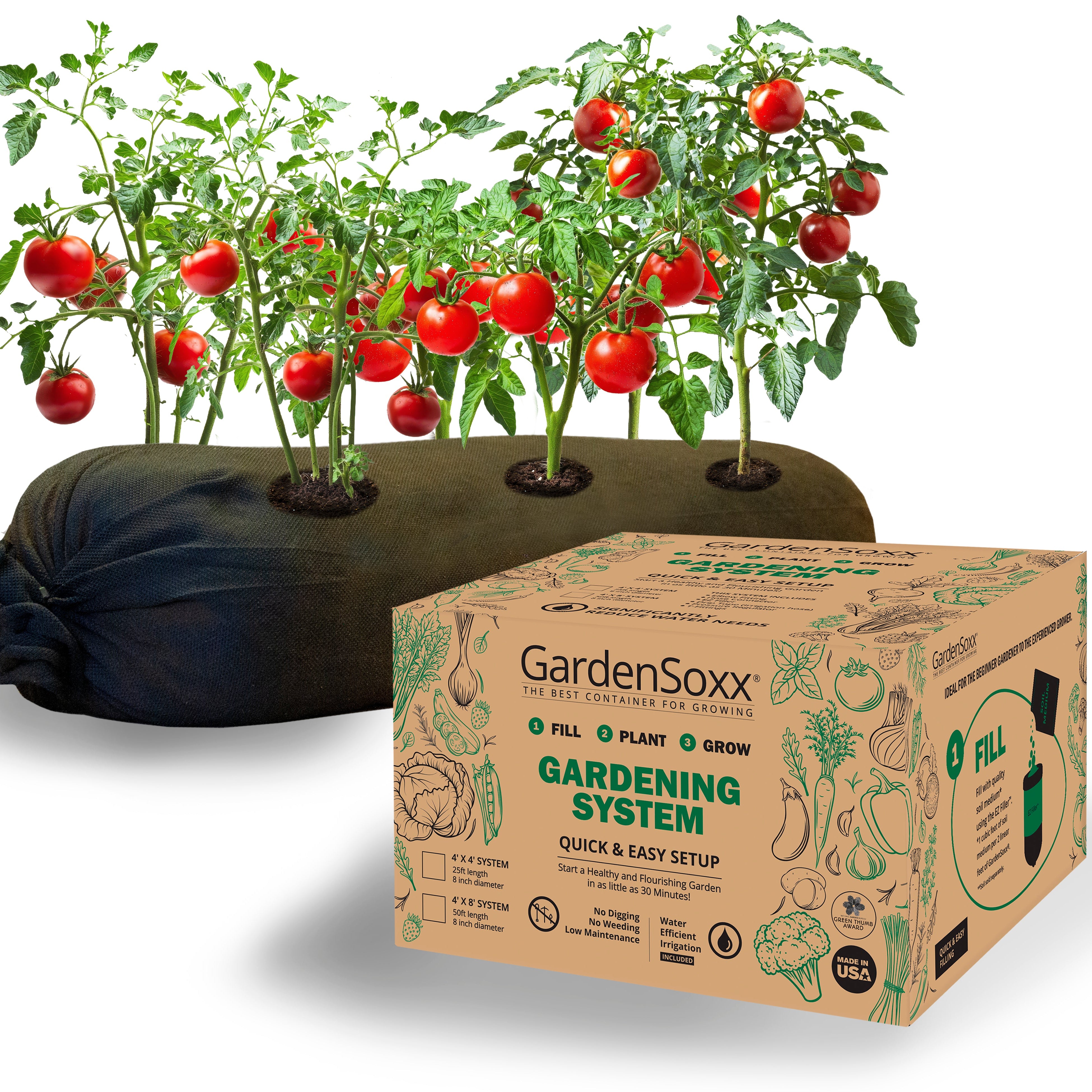Kale
If you are wondering how to grow kale in your garden this year, you will be happy to know that this leafy green superfood is an excellent crop for beginner gardeners. Not only is kale easy to grow, but it will provide you with a continuous harvest well into the fall, sometimes even winter, depending on your growing zone.
Kale is a hardy crop that can be used for a wide array of raw and cooked recipes. Packed full of nutrition, kale is the perfect addition to both small and larger gardens that aspire to maximize the overall nutrient content of their home-grown yield.

Growing kale in GardenSoxx® | Plant Family: Brassicaceae
Different Varieties of Kale
With a wide range of different varieties of kale available to grow, it is no wonder that this kitchen staple crop has become a gardening trend. Even varieties that are considered ornamental are edible, making them an interesting addition to your home landscape serving a dual purpose. Here are a few cultivars you may want to explore for your garden:
Lacinato Kale (also called Dinosaur Kale) has a flatter leaf than its curly-leaf cousins. The reptilian-textured leaves are long and dark green and have a mild flavor with a touch of sweetness. The stems are less woody than regular kale, making this variety excellent for raw use in salads, but equally as delicious in a sauté or soup.
A popular variety with curly kale leaves is the Vates Blue Kale cultivar, often used as a garnish due to its attractive blue-green curly leaves. This variety is also widely available in grocery stores, loved for its mildly sweet flavor and big crunch.
For a cold-tolerant kale variety that grows easily in northern climates, White Russian Kale is a highly productive variety that is equally easy to grow. It’s tender leaves can be harvested in 60 days from planting and tend to resist pests better than some other varieties.
To benefit from a longer growing season, Premier Kale plants are resistant to bolting, very cold-hardy and grow exceptionally well in containers. Their large leaves are a deep shade of green with scalloped edges with minimal stem and a pleasant crunch.
For something a bit different, try growing Red Chidori Kale. This plant’s frilly leaves are a vibrant purple color, moving into a deep shade of red in the center of the plant. Used for both ornamental and edible purposes, this kale variety is sure to turn heads toward your garden.
Nutritional Information For Kale
Nutritional Facts - per 100/g
| Nutrient | Amount | % Daily Value |
|---|---|---|
| Calories | 28 | - |
| Total Fat | 0.4 g | - |
| Sodium | 23 mg | - |
| Potassium | 228 mg | - |
| Dietary Fiber | 2 g | - |
| Sugar | 1.3 g | - |
| Protein | 1.9 g | - |
| Vitamin C | - | 22% |
| Iron | - | 5% |
| Calcium | - | 6% |
How to Grow Kale in Your GardenSoxx®
From seed or by transplanting - kale should go in the ground during the cooler days of early spring to give it a good head-start on growing before the summer heat sets in. Plant seedlings 12 inches apart, in full sun or partial shade.
Kale Seed to Harvest Time: 60 - 75 Days

How to Harvest Kale
Cut leaves at the base of the stem, always removing the oldest leaves first, once they are about the size of your palm. Be sure also to remove any yellowed or damaged leaves as the plant grows in order to keep it healthy.


















































